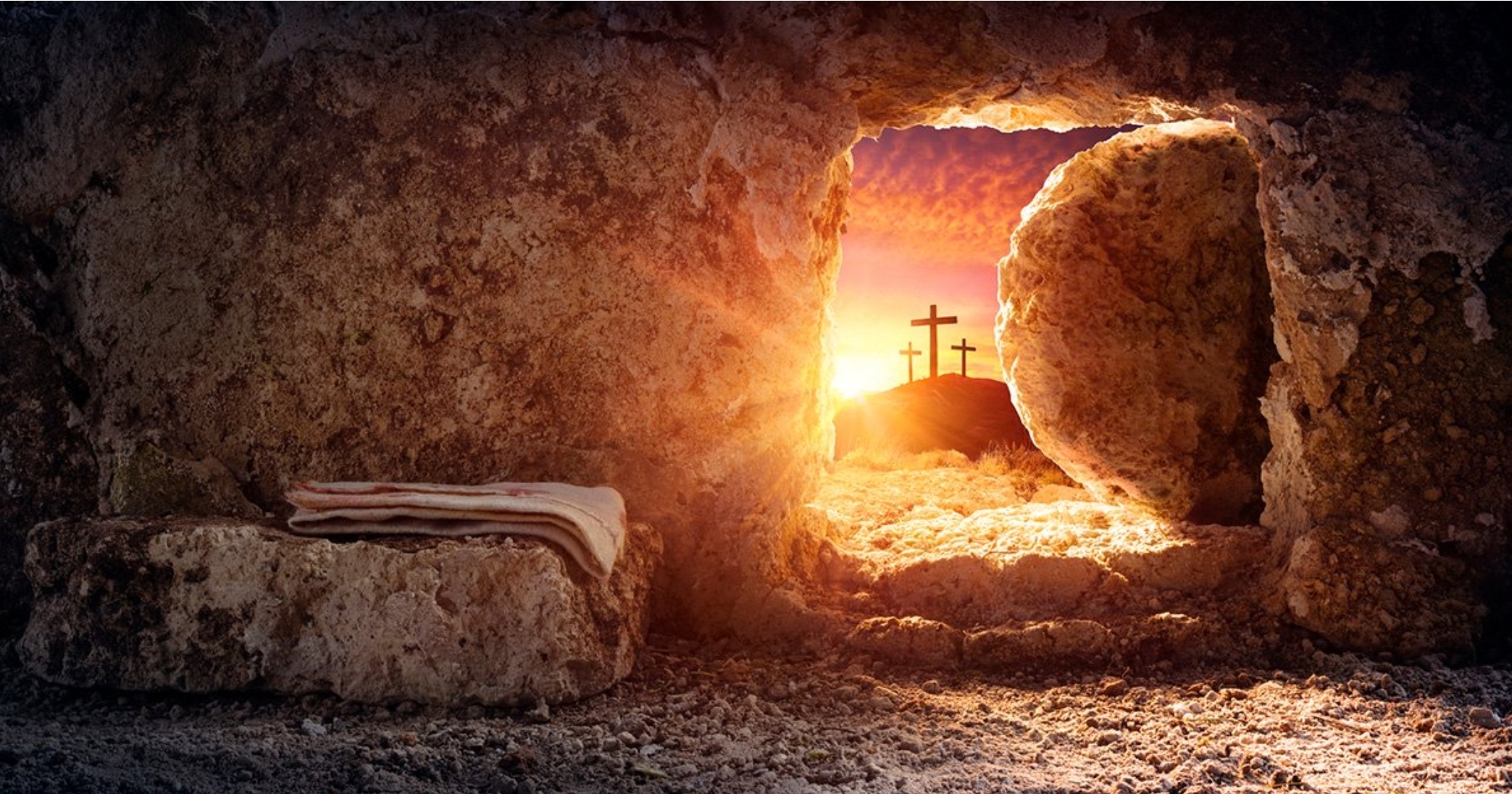
Mark 16:1-8
¹When the Sabbath was over, Mary Magdalene, and Mary the mother of James, and Salome, bought spices, so that they might come and anoint Him.
²Very early on the first day of the week, they came to the tomb when the sun had risen.
³They were saying to one another, “Who will roll away the stone for us from the entrance of the tomb?” ⁴Looking up, they saw that the stone had been rolled away, although it was extremely large.
⁵Entering the tomb, they saw a young man sitting at the right, wearing a white robe; and they were amazed. ⁶And he said to them, “Do not be amazed; you are looking for Jesus the Nazarene, who has been crucified. He has risen; He is not here; behold, here is the place where they laid Him.
⁷But go, tell His disciples and Peter, ‘He is going ahead of you to Galilee; there you will see Him, just as He told you.'”
⁸They went out and fled from the tomb, for trembling and astonishment had gripped them; and they said nothing to anyone, for they were afraid.
Devotional
Jesus, the Risen One, Himself must initiate the proclamation.
We are allowed to stand in his service.
He is risen!
During Easter we sing our Easter songs exuberantly. In comparison, the way Mark tells about the resurrection of Jesus is very sober and sober.
Fortunately, we are not introduced into a completely different world from ours. Jesus’ resurrection took place in our reality.
We first hear about women going shopping after the Sabbath (Mark 16:1).
The next morning they are up early. They set out when it becomes light (Mark 16:2).
While they are on their way, they worry about a problem that cannot be solved by themselves: the rolling away of the stone (Mark 16:3). You hear, it is not all that lofty, not far from us.
It is all told so soberly.
Mark does not even speak of an angel in the grave, but simply of a young man (Mark 16:5).
He is wearing a white robe.
That is strange. Because that is festive clothing (White is a symbol of purity or joy (cf. Ecclesiastes 9:8) and of heavenly glory. It is the color that the clothes of Jesus had during the transfiguration on the mountain (Mark 9:2,3) and which are carried by angels and believers in glory (Revelation 6:11, 7:9,10).
The party always ends in the grave.
This is where the party seems to start in the grave.
But the women are far from ready for that. They only hear that Jesus is no longer here, the Crucified One has been raised to life (Mark 16:6). They must also make sure that He is no longer where He was laid. They had also seen the latter themselves (Mark 15:47).
The Easter message is now entrusted to these women.
That is a risk. Because what will they do with it? Will that message ever reach us? It doesn’t seem like it at first. Because they didn’t say anything to anyone, they are afraid (Mark 16:8).
They don’t know how they will react to the strange thing they have to say. Does Easter come to a dead end immediately?
Jesus Himself will have to initiate the proclamation.
The expectation is therefore focused on Him: He precedes you (Mark 16:7).
In the East a shepherd goes before his flock. In this way, Jesus immediately after He is resurrected goes before His disciples into the future. He still does that today (Hebrews 13:20,21).
He’s calling us to follow Him today.
Let’s do so, and follow Him.
Question
▪︎ What comfort does 1 Corinthians 15:12-22 give you?
Prayer suggestion
▪︎ Praise Jesus, the Conqueror, the great King, the Prince of Peace.
Twitter: @SchoemakerHarry
Website 1: https://devotionals.harryschoemaker.nl
Website 2: http://bijbelplaatjes.nl


